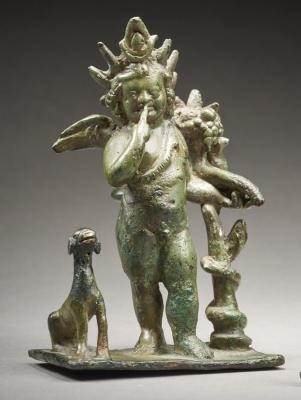Project « The New Faces of Egyptian Gods: Isis and her Circle »
Following Alexander the Great’s conquest in 332 BCE, Egypt became a multicultural society shaped by dynamic exchanges, particularly in the religious sphere. Within a flexible and inclusive polytheistic system, the deities of different cultures naturally entered into interaction. This led to the emergence of new modes of representation for Egyptian gods, blending figurative elements borrowed from the various cultures present in the Nile Valley. The phenomenon intensified further when Egypt became a Roman province in 30 BCE.
Under Greek and then Roman influence, the goddess Isis underwent a metamorphosis, assuming a multitude of appearances within a reconfigured divine family (Sarapis, Harpocrates, Anubis, etc.). The new faces of these Isiac deities appeared on a wide range of material supports and in countless contexts, both in Egypt and throughout the Hellenistic and later Roman worlds. These figurative media, in one way or another, bear witness to the immense success of the cults devoted to Isis and the members of her divine circle, practiced for more than seven centuries across the Mediterranean basin.
This international research project aims to reconstruct this rich and coherent imaginary and to explore its modes of formation, perception, and use through an inter-iconic and anthropological approach. Indeed, all these images can only be understood in relation to one another and within the socio-cultural networks in which they evolved. The series “Bibliotheca Isiaca”, published by Peeters Publishers (Leuven), is the main platform for disseminating the results of this research.
Research projects:
Researchers
Discover other research projects
Scientific team
The research carried out at Mariemont is organised around 8 thematic areas which reflect the specific features of the scientific work carried out in the museum sector.
There are around thirty collaborative research projects in which members of the Mariemont scientific team are involved.
The results of this research are made available to the scientific community and are the subject of ongoing accessibility work to ensure that they are passed on to the public.




